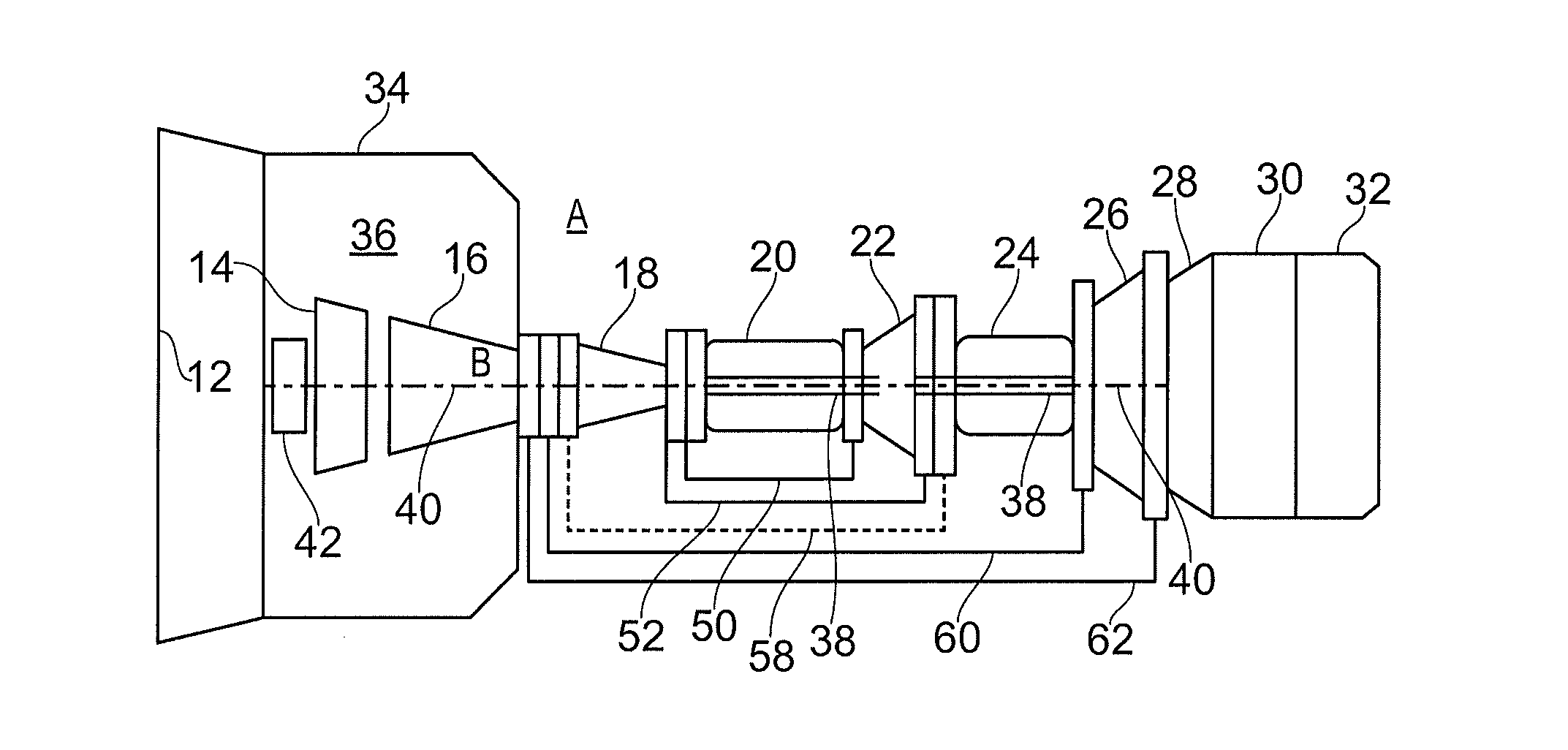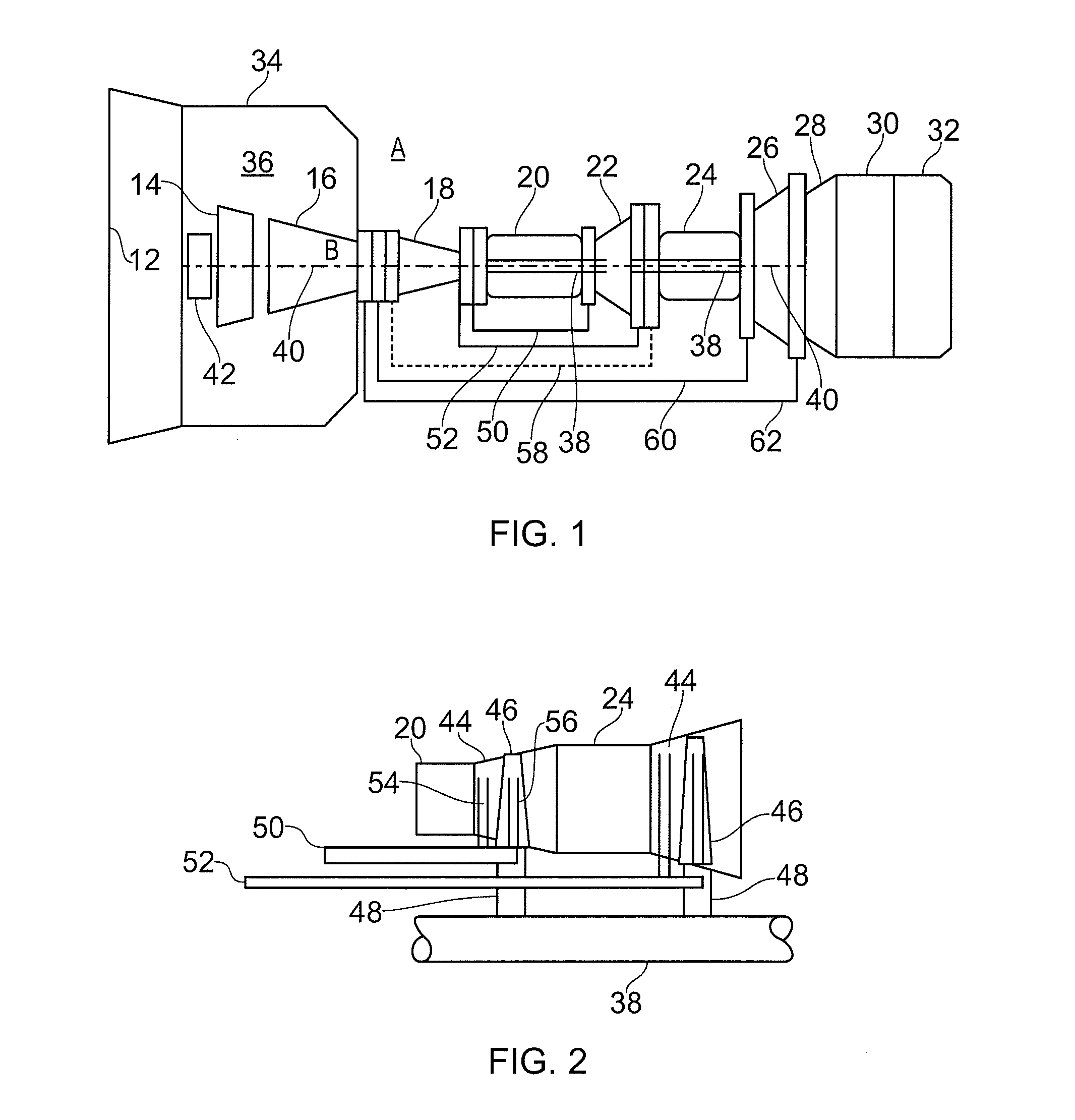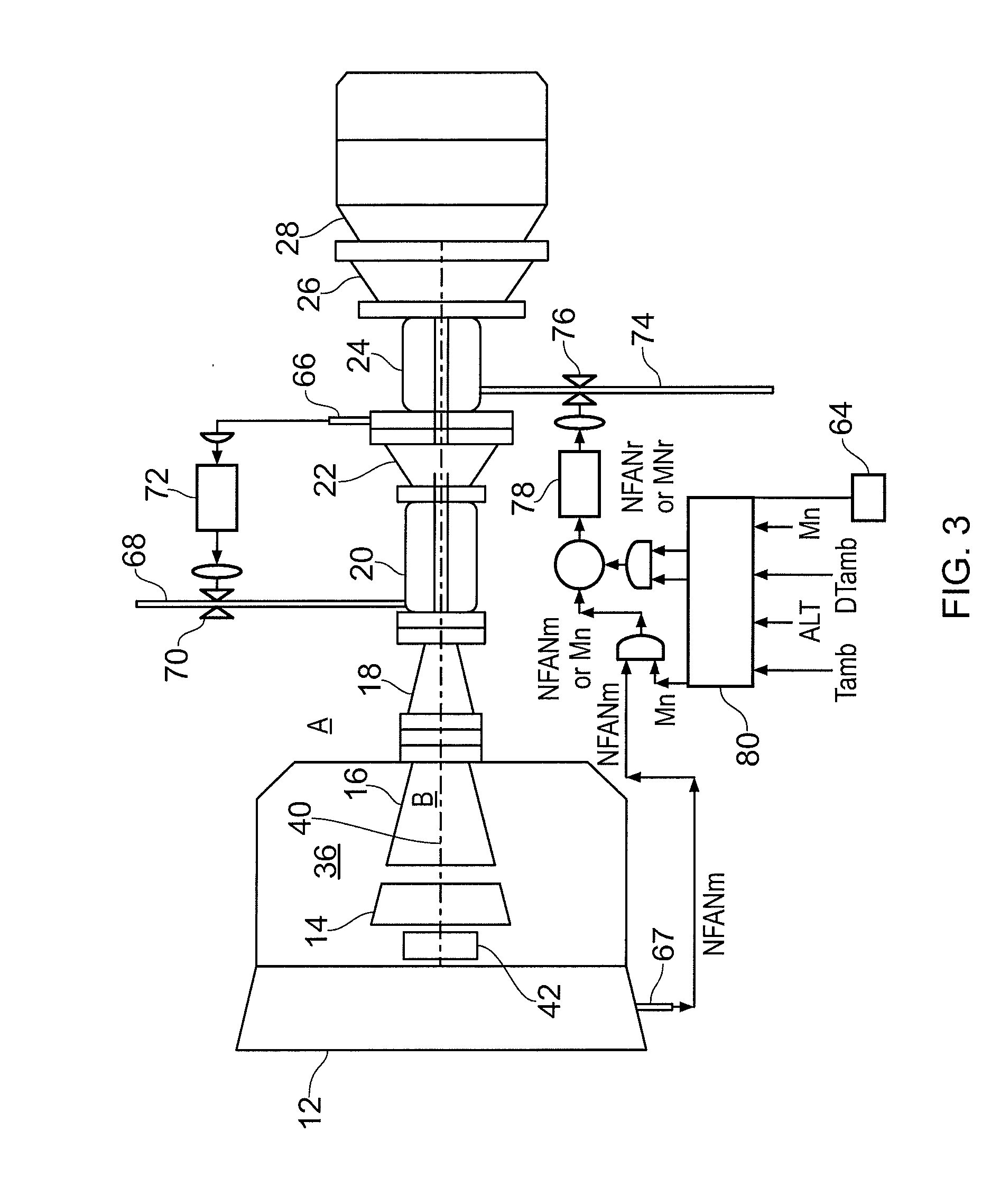Gas turbine engine
a technology of gas turbine engine and engine exhaust, which is applied in the direction of machines/engines, efficient propulsion technologies, light and heating apparatus, etc., can solve the problems of increasing sfc, significantly less power produced, and particularly pronounced problems, so as to reduce the formation of vapour trails, increase the exhaust temperature of the engine, and increase the exhaust of the engine
- Summary
- Abstract
- Description
- Claims
- Application Information
AI Technical Summary
Benefits of technology
Problems solved by technology
Method used
Image
Examples
Embodiment Construction
[0043]FIGS. 1 to 4 show a gas turbine engine 10, methods of controlling the engine 10, and a T-S diagram showing the thermodynamic cycle of the engine 10.
[0044]The gas turbine engine 10 comprises an air intake and a propulsive fan 12 that generates two airflows A and B. The gas turbine engine 10 comprises, in axial flow A, a core comprising a booster compressor 14, a high pressure compressor 16, 18, a first combustor 20, a high pressure turbine comprising a first turbine stage 22, a second combustor 24, a second turbine stage 26 of the high pressure turbine, a low pressure turbine 28, an optional afterburner 30, and an exhaust nozzle 28. A fan housing 34 surrounds the core and fan 14 and defines, in axial flow B, a bypass duct 36.
[0045]The first and second stages 22, 26 of the high pressure turbine are coupled to the high pressure compressor 16, 18 by a first shaft 36. The low pressure turbine 28 is coupled to the booster compressor 14 and fan 12 by a further shaft 40 arranged coaxi...
PUM
 Login to View More
Login to View More Abstract
Description
Claims
Application Information
 Login to View More
Login to View More - R&D
- Intellectual Property
- Life Sciences
- Materials
- Tech Scout
- Unparalleled Data Quality
- Higher Quality Content
- 60% Fewer Hallucinations
Browse by: Latest US Patents, China's latest patents, Technical Efficacy Thesaurus, Application Domain, Technology Topic, Popular Technical Reports.
© 2025 PatSnap. All rights reserved.Legal|Privacy policy|Modern Slavery Act Transparency Statement|Sitemap|About US| Contact US: help@patsnap.com



